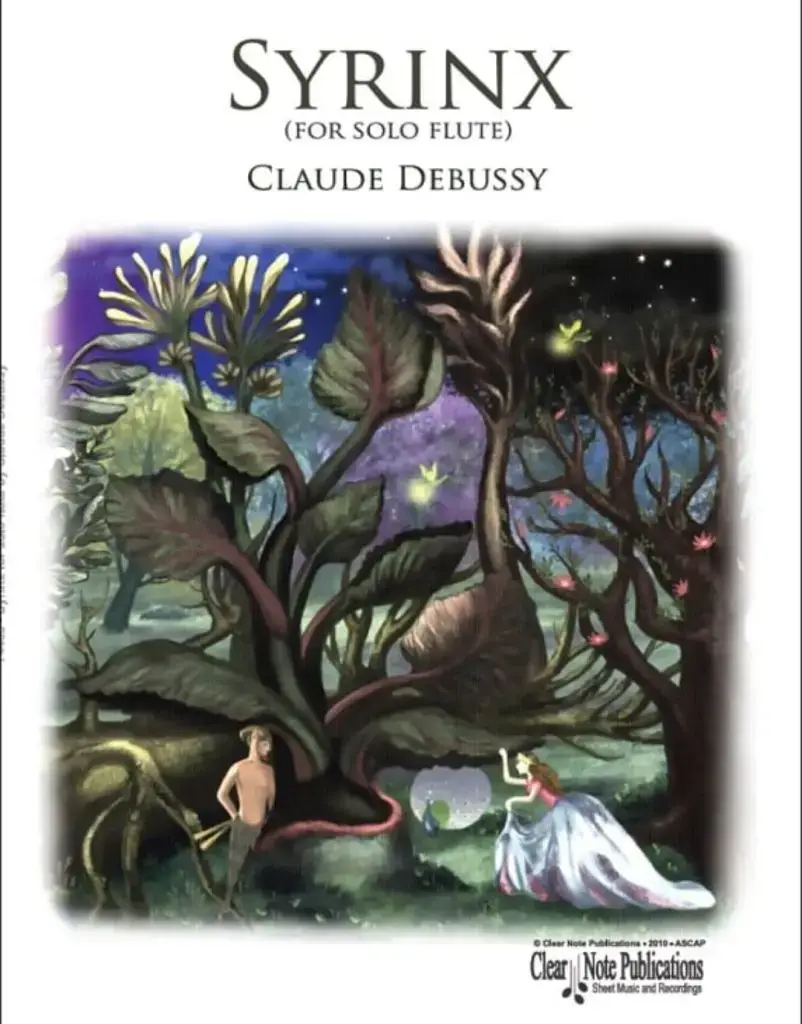
The Premiere of Claude Debussy’s Syrinx in 1913
Introduction to an Iconic Solo Flute Work
Claude Debussy’s Syrinx is one of the most significant and frequently performed works in the solo flute repertoire. Composed in 1913, this short yet evocative piece is often regarded as the first truly modern work for solo flute, marking a departure from the virtuosic showpieces of the 19th century and embracing a more impressionistic and expressive approach. Originally titled La Flûte de Pan, Syrinx captures the essence of Debussy’s mature style, blending ethereal melodies with innovative harmonic progressions.
The First Performance
Syrinx was premiered on December 1, 1913 at the Théâtre des Champs-Élysées in Paris, as part of the incidental music for Gabriel Mourey’s play Psyché. The play featured a scene where the character Pan, a symbol of nature and rustic beauty, laments the loss of his beloved nymph Syrinx. Debussy composed the piece to accompany this moment of the play, and it was performed by the French flutist Louis Fleury.
The premiere of Syrinx was not initially recognized as a standalone concert piece but rather as part of the theatrical performance. However, the work’s haunting beauty and the expressive depth of Fleury’s performance left a lasting impression on audiences, leading to its subsequent popularity as a concert piece.
Structure and Musical Content
Syrinx is a brief work, typically lasting about three minutes, yet it is rich in musical ideas. The piece is unaccompanied, relying solely on the flute to convey its expressive narrative. Debussy uses the whole-tone scale, chromaticism, and subtle dynamic shifts to evoke the pastoral and mythological themes of the story.
The music begins with a flowing, improvisatory melody that reflects Pan’s melancholy and longing. As the piece progresses, the mood shifts between moments of introspection and more intense, almost desperate outbursts, before finally fading away into a quiet, unresolved conclusion. This unresolved ending enhances the piece’s sense of mystery and timelessness, capturing the elusive and ephemeral nature of both the music and the myth it represents.
Importance and Legacy
Syrinx holds a special place in the flute repertoire, not only as a showcase for the instrument’s expressive capabilities but also as a pioneering work in the development of 20th-century flute music. The piece is often considered the first significant solo flute work of the modern era, setting a precedent for later composers to explore new expressive and technical possibilities for the instrument.
The premiere of Syrinx marked a turning point in the perception of the flute, demonstrating that it could convey deep emotion and complex musical ideas without the need for accompaniment. Debussy’s innovative use of the flute’s tonal colors and his exploration of non-traditional scales and harmonies influenced many later composers and helped to expand the role of the flute in contemporary music.
Syrinx also became a staple in the repertoire of flutists worldwide, serving as both a concert piece and a pedagogical work. Its challenges lie not in technical virtuosity but in the ability of the performer to convey the piece’s emotional depth and subtle nuances.
Conclusion
The premiere of Claude Debussy’s Syrinx on December 1, 1913, introduced a work that would become an enduring masterpiece of the solo flute repertoire. Its importance lies not only in its innovative approach to flute writing but also in its profound influence on the development of modern flute music. Today, Syrinx remains a beloved piece, cherished for its lyrical beauty and its ability to evoke the timeless and mystical world of ancient myths.
This event has passed.
Premiere of Claude Debussy’s Syrinx

